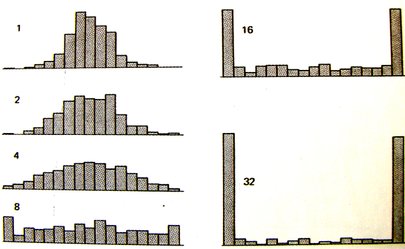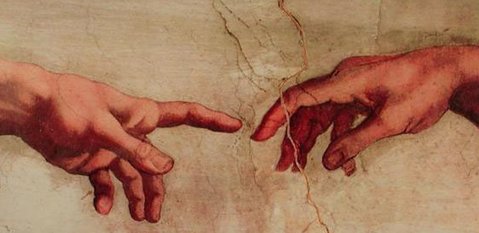Kepler-science.nl
The English pages can be found in the second row of the menu
De eerste rij knoppen in het menu is voor de Nederlandse pagina's
Biodiversity
Biodiversity on the Earth is huge, the Beetles being the largest group on animals by far. If you only look at the well known Ladybird you see a large variety - if you only look at the colours and patterns of their shield : dots in black or other colours against a red, yellow or black background. And the same 'model' can be unicolour, striped ... not to speak of all the other beetle models in enormous varieties.
Where does this vast biodiversity come from?
Looking for the cause of biodiversity
It's easy to see that we can discern a number of basic models like grasses, beetles, midges, snakes and cats. Within each of these model we sometimes see a lot of variation, which leads us to two questions:
- Where do the Basic Types (models) come from?
- What's the origin of al the variation within the Basic Types?
In other words: how far does kinship go? And: does kinship also mean common descent?
Speciation
It seems to happen: new species coming into existence. We have lots of observations which point towards this micro-evolution or variation. Two main options seem to be open:
- Isolation of small populations can lead to genetic drift. Just by chance (due to low numbers) some variety in the gene pool of this populations gets lost. In a way it is degeneration: loss of information. When meeting the original population they are not recognised (reproductive isolation, e.g. because of a change in colour or pattern) and drift away further.
- Sexual selection (e.g. by colour differences) could also lead to reproductive isolation and speciation.
One of the big questions is to what extent mutations are important for speciation. For the options mentioned above the answer seems to be no. But there are some types of mutations who might enhance variation and stimulate specation: see DNA-2 for more. And both the monophyletic and the polyphyletic model have place for both of the speciation mechanisms.
Macro-evolution
Sometimes scientist speak about mega-evolution (and mean smaller changes when speaking about macro-evolution) - but here we see the difference between the two models. Monophylists assume all life is related, descending from simpler forms of life. They have to assume new traits came into existence because for new models (basic types) innovation is necessary. Mutation is an option, but it almost always leads to loss of information and hardly ever is beneficial. How new traits really could appear still is a kind of mystery. Polyphylists state that many basic types (probably on the level of families) came into existence separately, branching out by variaton. They deny macro-evolution.
Kinship
Four ways seem to be open to establish relations between species:
- Similarities in body plan
- Similarities in behaviour
- Biochemical similarities
- Crossing experiments.
Only the last one can really establish species borders (by definition), but the other ones can give a good support. Similarities can be caused by different things: common descent, common use and common creator.
Parasitism
What is the origin of parasitism? How could the existence of parasites be reconciled with God's good creation? And what about bacteria and virusses causing diseases? Logical questions! On the Logos-congress in april 2018 I did a lecture about it, Link 4 and 5 on the Dutch 'soorten' page lead to articles in Dutch about it - the English versions aren't ready as yet ....
Above four basic models. Possibly they all are separate basic types, who developed to a variety of species within the type because of built-in options for variation..
Loss of alleles will almost always happen in a small population, as this simulation shows: after 32 generations the vast majority of the 100 groups of 8 individuals either lost the dominant or the recessive allele - just by chance
Links:
- Wikipedia on: genetic drift and mutations
- Read about: cats as basic type
- More about: mutations
- For more Dutch links go to 'soorten'
- For more on DNA (how it works, about mutations and on jump-DNA) go to DNA-1 and DNA-2
- The problem of convergence.
- About a comparison between a common descent model and a dependence graph model. You can also read the original article in Biocomplexity.






















